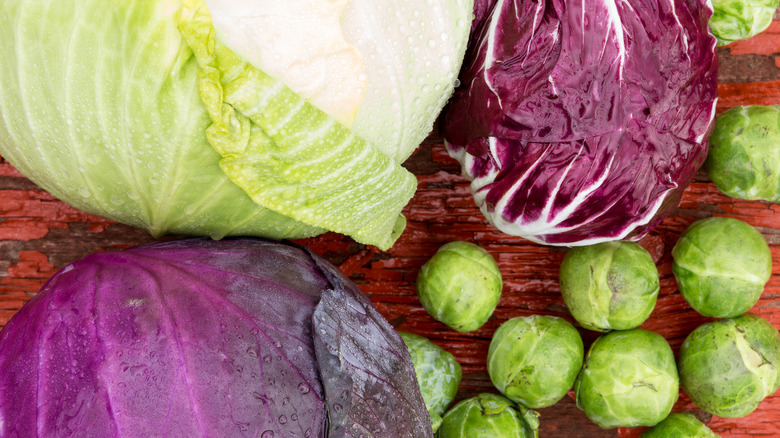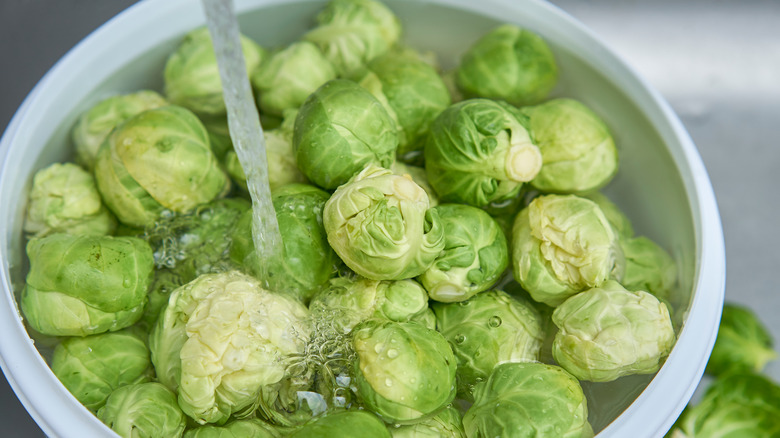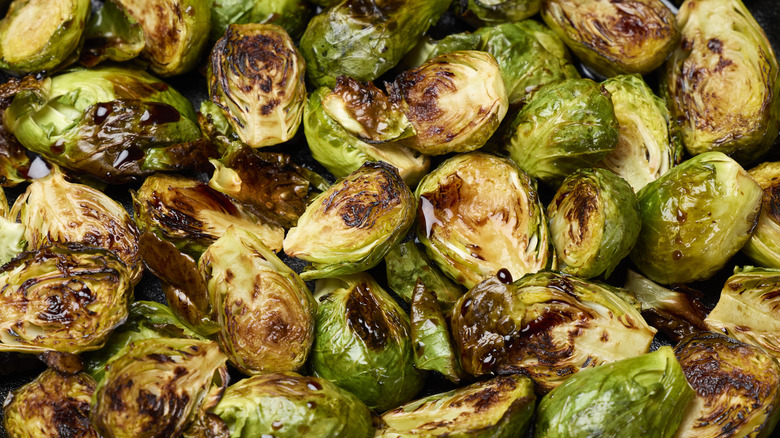Are Brussels Sprouts Technically A Type Of Cabbage?
The short answer is yes. The long answer is that many vegetables are technically types of cabbages. Brussels sprouts, kale, broccoli, cauliflower, cabbages, and many other hardy vegetables are cultivars of the prolific species Brassica oleracea. What are cultivars, you ask?
Cultivars are essentially plants that are propagated via human intervention for specific traits. It may be surprising to find out that these different vegetables are related, much less that they are the very same species. As the wild Brassica oleracea made its way around the world and became domesticated, people propagated it for preferred traits.
Those who propagated it for its leaves led to cultivars like kale and collards, and gai lan in Asia. When propagated for its compact flowers, it resulted in broccoli and cauliflower. When propagated to produce tight buds near the eponymous Brussels, Belgium, in the 13th century, it became Brussels sprouts. It is no wonder then that Brussels sprouts look like miniature cabbages and in some cooked preparations, smell like cooked cabbages too.
How to prepare Brussels sprouts
Brussels sprouts are notorious for being a disliked food, ignored at holiday feasts because of their odor. Unsurprisingly, these same Brussels sprouts are often prepared improperly, from how they are cleaned and trimmed to how they are cooked. To make them correctly it all starts with cleaning the spouts correctly.
To do that, trim the rough nub at the base of each sprout and cut them in half lengthways, or make a small cut through the base if you want to keep them whole. Then, place the trimmed sprouts in a large bowl and cover with water. Add about one tablespoon of salt per one quart of water and swish everything around. Leave the sprouts to soak for at least 10 minutes, up to half an hour. The small cut made earlier will help water irrigate between the leaves, while also helping them to cook more evenly later. The salt helps to tenderize the sprouts and season them evenly.
Drain the water from the bowl, making sure to gently agitate the sprouts to make sure that any dirt gets dislodged. Dry them as well as possible in a single layer on a clean kitchen towel, or in batches with a vegetable spinner. The sprouts are now ready for cooking.
Ways to cook Brussels sprouts
When it comes to cooking Brussels sprouts, a common mistake is to boil or steam the sprouts instead of roasting them. These methods do no favors for the aforementioned sulfur compounds, making the sprouts smell even stronger. An easy fix is to switch cooking methods by turning to the oven instead. You will discover that roasting Brussels sprouts makes them much more delicious.
It is not enough to just roast Brussels sprouts — it must be done at high heat to caramelize them until crispy, highlighting the natural sugars within. Do not discard any of the outer leaves that fall off either, add them to the pan along with the whole buds as these leaves will be extra crispy upon roasting. These maple dijon Brussels sprouts are perfect for practicing these nifty cleaning and cooking tips. If you do not have an oven, a hot saute pan will also do the trick — try out these soy-glazed Brussels sprouts with bacon instead.


